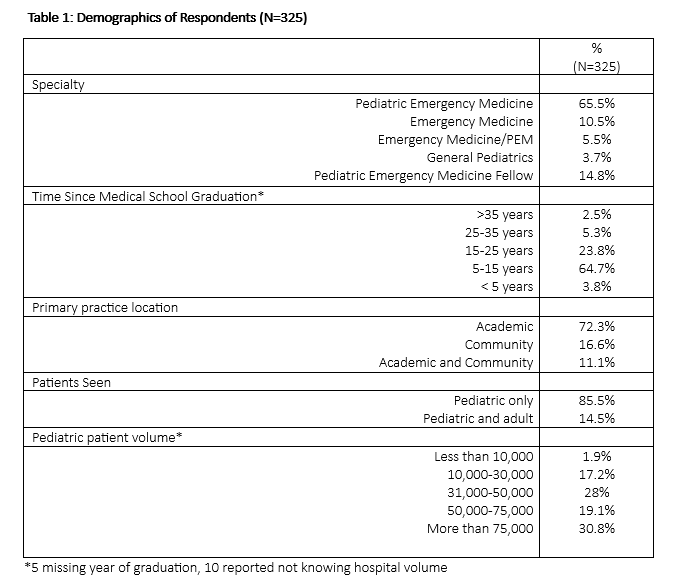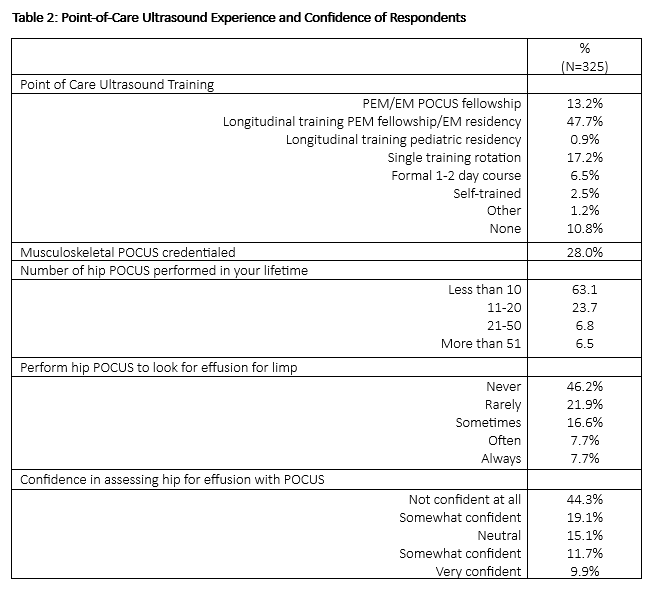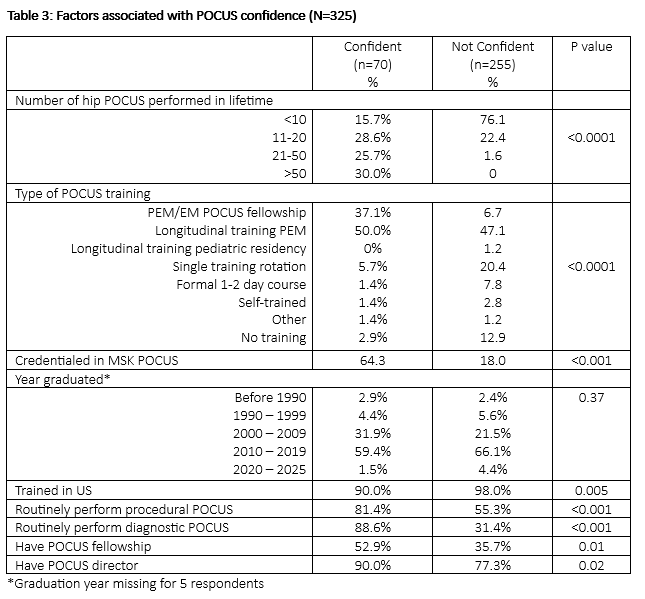Emergency Medicine 3
Session: Emergency Medicine 3
441 - Factors Influencing Physician Confidence in Point-of-Care Ultrasound Use for Pediatric Hip Effusion Diagnosis
Friday, April 25, 2025
5:30pm - 7:45pm HST
Publication Number: 441.4678
Shahfar Khan, Rady Children's Hospital San Diego, San Diego, CA, United States; Kathryn Pade, Rady Children's Hospital San Diego, San Diego, CA, United States; Todd Chang, Children's Hospital Los Angeles, Los Angeles, CA, United States; Atim Ekpenyong, University of California, San Diego School of Medicine, San Diego, CA, United States

Shahfar Khan, MD (she/her/hers)
Associate Physician
Rady Children's Hospital San Diego
San Diego, California, United States
Presenting Author(s)
Background: Hip effusions are a common cause of pediatric limp, yet diagnosis remains challenging due to nonspecific symptoms and limitations of traditional imaging, such as radiographs, which may not adequately visualize effusions. Point of care ultrasound (POCUS) offers a non-invasive, radiation-free option for rapid bedside detection of hip effusions, potentially reducing length of stay and healthcare costs. Despite its benefits, variability in training, experience and institutional resources affects physician confidence and proficiency with POCUS. This study examines factors influencing physician confidence in detecting pediatric hip effusions with POCUS.
Objective: This study's objective is to identify factors affecting physician confidence in using POCUS for hip effusion detection in pediatric limp cases. By exploring the roles of training, experience and institutional support, we identify opportunities to improve POCUS education to enhance diagnostic accuracy and outcomes in Pediatric Emergency Medicine (PEM).
Design/Methods: Physicians were recruited through the Brown PEM Listserv and P2Network, targeting PEM physicians. Data collection was conducted using REDCap. Participants reviewed two clinical scenarios involving limping children ( < 8 years) in the emergency department. Confidence data were dichotomized as somewhat or strongly confident versus neutral, somewhat or strongly not confident. Demographic, education and experiential metrics were compared by self-reported confidence level using Fisher’s exact and chi-square tests in STATA 18 (College Station, TX).
Results: Of the 325 completed surveys, most respondents were PEM attendings who graduated medical school within the last 15 years, work at an academic center and primarily see pediatric patients (Table 1). 28% were credentialed in musculoskeletal POCUS, 13.2% had completed a POCUS fellowship and 47.7% received longitudinal POCUS training during residency/fellowship. Most do not use hip POCUS to evaluate limping patients (68.1%) (Table 2). 44.3% of respondents do not feel confident in obtaining hip POCUS (Table 2). The factors most significantly associated with increased confidence include the number of hip US performed, completion of a POCUS fellowship, longitudinal POCUS training during residency/fellowship and obtaining hospital-specific POCUS credentials (Table 3).
Conclusion(s): This study highlights a critical gap in physician training with POCUS. Findings underscore the need for structured, longitudinal, and hands-on training programs with institutional credentialing to enhance physician confidence and proficiency in this valuable diagnostic tool.
Table 1: Demographics of Respondents (N=325)

Table 2: Point-of-Care Ultrasound Experience and Confidence of Respondents (N=325)

Table 3: Factors associated with POCUS confidence (N=325)


